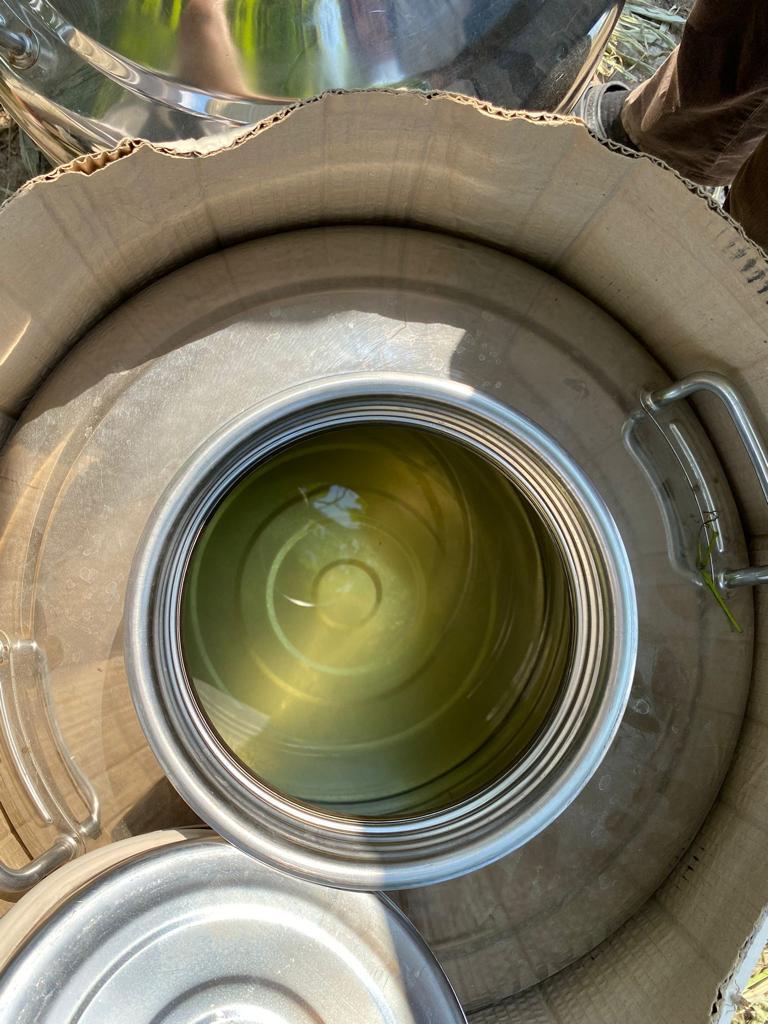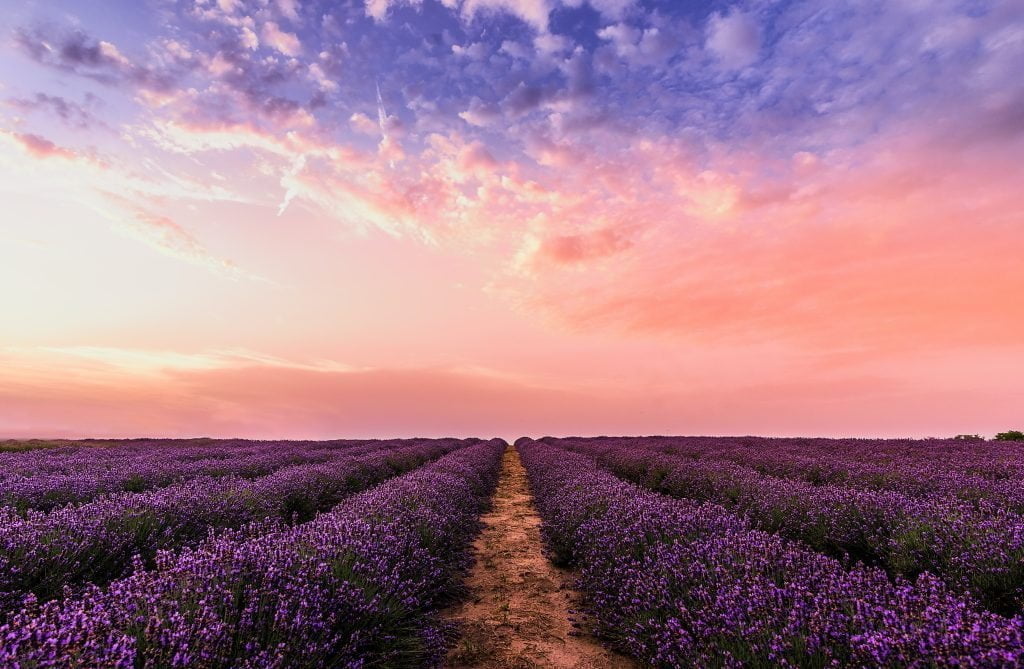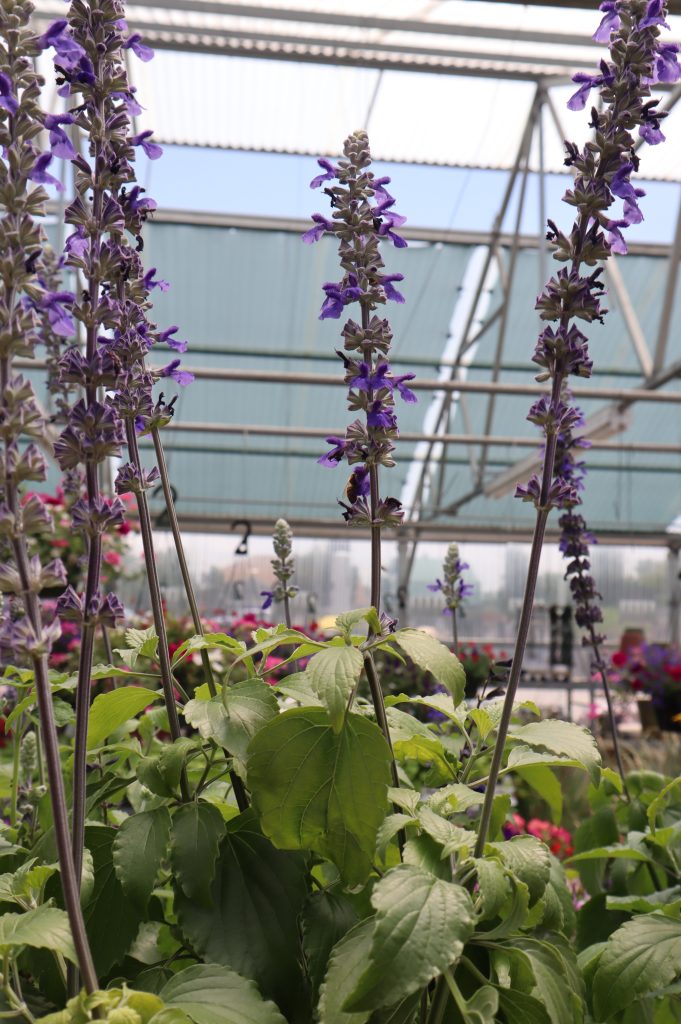Seasonal Guide: When and How Lavender is Harvested
Lavender, with its delicate purple blooms and soothing fragrance, has been cherished for centuries for its therapeutic and aromatic properties. Harvesting lavender is a precise art that requires understanding the plant’s growth cycle and using methods that preserve its quality. In this seasonal guide, we will explore the best time to harvest lavender and the techniques used to ensure optimal quality for various applications.

Understanding the Lavender Growth Cycle
Lavender’s growth cycle is closely tied to seasonal changes and directly impacts its oil production and flower quality. Recognising the stages of this cycle allows growers to optimise care and harvesting decisions.
- Spring Growth: During this phase, typically occurring from late March to May, lavender awakens from dormancy, and new green shoots emerge. This is the time for nurturing the plant’s health, ensuring it receives ample sunlight and well-drained soil. Pruning deadwood early in spring is essential to promote strong growth and prepare the plant for the flowering stage. Balanced fertilisation is another crucial step during this phase, as it provides the nutrients needed for robust blooms later in the year.
- Summer Bloom: The vibrant flowering phase, from late June to early August, is the highlight of the lavender growing cycle. During this time, the fields are a stunning sea of purple, attracting pollinators such as bees. The timing of the harvest within this window is critical as it determines the concentration of essential oils and the vibrancy of the flowers. Late bloom may reduce fragrance, while premature cutting could lead to lower yields.
- Dormancy in Winter: After autumn, lavender plants enter a resting phase that lasts until early spring. During dormancy, the plant conserves energy, focusing on root health and preparing for the next growth cycle. It is essential to shield lavender from frost and excessive moisture, as waterlogged soil can damage the roots. Proper mulching and ensuring good drainage are recommended practices to protect the plant during this vulnerable period.

When to Harvest Lavender
Timing is everything when it comes to harvesting lavender. The stage of flowering determines its suitability for specific uses, from essential oils to culinary delights. Knowing the optimal time to harvest each variety ensures the best results.
- Lavender for Essential Oils: Essential oil production demands the highest concentration of fragrance and therapeutic compounds. The peak bloom stage, where flowers are fully open but not yet wilting, is ideal for this purpose. The oil glands on the flowers are at their most active, producing a balanced mix of aroma and medicinal properties. For maximum yield, the weather plays a significant role. Sunny, dry conditions ensure the oil’s potency remains intact during harvest.
- Lavender for Dried Flowers: For dried bouquets or sachets, the timing shifts slightly earlier than for oil extraction. Harvesting when the buds are just beginning to open ensures the flowers retain their vibrant purple hue and remain intact after drying. This stage is particularly important for decorative uses, as fully opened flowers are prone to shedding.
- Lavender for Culinary Use: Culinary lavender requires a delicate balance of flavour and aroma. The best time to harvest is before the flowers open, ensuring that the buds have a milder and more concentrated taste. This makes culinary lavender ideal for infusing teas, desserts, and syrups without overwhelming dishes with a floral aftertaste.
Additionally, regional climates and species differences, such as English lavender (Lavandula angustifolia) versus French lavender (Lavandula stoechas), may slightly alter the timing, so close observation is essential.

How to Harvest Lavender
The harvesting process involves several steps to ensure that lavender’s quality is preserved and the plant remains healthy for future growth.
- Preparation Before Harvest: The timing and tools used during lavender harvesting significantly impact the outcome. Harvesting is best done in the morning after the dew has evaporated but before the sun’s heat diminishes the oil content. Tools such as sharp pruning shears or sickles are essential for making clean cuts, and minimising damage to the stems. Growers should also wear protective clothing and gloves to avoid irritation from the plant’s stems and leaves.
- Cutting the Stems: Proper cutting techniques ensure both a healthy plant and a bountiful harvest. Stems should be cut about one-third of the way down, just above the woody base of the plant. This method encourages new growth while maintaining the plant’s structure. Bundling stems into small bunches immediately after cutting simplifies transport and drying.
- Drying and Processing: Drying is a critical step for preserving lavender flowers. Hanging small bundles upside down in a cool, dark, and well-ventilated space allows the flowers to retain their colour and fragrance. For essential oils, distillation should occur within hours of harvest. Steam distillation involves placing freshly cut lavender in a chamber, where steam extracts the essential oils without degrading their quality.

Methods for Ensuring Quality
Maintaining high quality throughout the harvest and post-harvest processes requires attention to detail at every stage.
- Timing the Harvest: Choosing the right moment to harvest ensures optimal fragrance and therapeutic benefits. Avoid harvesting on humid or rainy days, as moisture can compromise the integrity of the flowers and reduce the efficiency of drying or distillation.
- Gentle Handling: Lavender flowers are delicate and require careful handling to avoid bruising. Bruised flowers may prematurely release their oils, reducing the yield and diminishing their aroma. Transporting freshly cut lavender in breathable containers, such as baskets or burlap sacks, prevents overheating and retains freshness.
- Storage Practices: Proper storage is essential to preserve dried lavender or essential oils. Dried lavender should be stored in airtight containers away from direct sunlight to maintain its colour and fragrance. Essential oils are best kept in dark glass bottles, which protect them from light and oxidation, ensuring their longevity and purity.

Challenges and Sustainability in Lavender Harvesting
Lavender cultivation is not without its challenges, particularly in today’s changing environmental landscape. However, adopting sustainable practices can address these concerns effectively.
- Environmental Challenges: Climate change poses a significant threat to lavender farming. Rising temperatures and unpredictable weather patterns can disrupt bloom cycles and reduce yields. Excessive rainfall, for instance, can lead to root rot or fungal diseases, particularly in poorly drained soils.
- Sustainable Practices: Embracing environmentally friendly farming methods can help mitigate these issues. Crop rotation, for example, improves soil health and reduces pest risks. Introducing biodiversity in lavender fields, such as planting companion herbs like rosemary or thyme, enhances pollination while deterring pests naturally. Avoiding chemical pesticides and fertilisers ensures that lavender remains an organic and eco-friendly crop.
Promoting sustainable harvesting methods not only preserves the quality of lavender but also ensures the long-term health of the fields, enabling future generations to enjoy this remarkable herb.

Conclusion
Harvesting lavender is a harmonious blend of science, art, and tradition. By understanding the plant’s lifecycle, timing the harvest correctly, and employing careful techniques, growers can maximise the quality and yield of their lavender. Additionally, adopting sustainable practices safeguards the environment while maintaining the integrity of lavender cultivation. Whether you are harvesting for essential oils, dried flowers, or culinary purposes, this seasonal guide provides the insights needed to make the most of this beloved herb.
